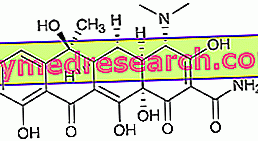Generality
The parsnip (or parsnip ) is a vegetable belonging to the Apiaceae family, identified with the binomial nomenclature Pastinaca sativa .

The parsnip is a biennial plant generally cultivated for annual production. Its long tuberous root has a skin and a cream-colored pulp; it can be left on the ground even when fully ripe, so that it becomes sweeter after the winter frosts. In the first growing season, the parsnip is presented with a rosette of green pinnate leaves. If abandoned in seed, in the second growing season it produces a flowering stem and surmounted by an umbrella of small yellow flowers. At that point, the stem of the parsnip becomes woody and the tuber is almost inedible. The seeds are light brown and flattened in shape.
The parsnip is native to the Eurasian continent, where it has been used as a vegetable since ancient times; the first crops were Roman, although the bibliographical references are not sufficiently clear on the distinction between parsnip and carrot. The parsnip was used as a sweetener even before the European advent of cane sugar and was introduced in the United States only in the nineteenth century AD.
Parsnips are generally eaten cooked, but can also be eaten raw.
It is rich in vitamins and mineral salts, especially potassium. It also contains antioxidants and dietary fiber.
The plant must be grown in deep, stone-free soils; it suffers negatively the infestation of the "carrot fly" and other parasitic insects, and is also exposed to infection with viruses and fungal diseases, among which the most serious is a sort of gangrene. With exposure to sunlight, contact of the parsnip stems and leaves on human skin can cause a rash ( phytophotodermatitis ) reaction .
Nutritional Features
Parsnips contain 74kcal / 100g and, despite being considered an average low calorie food, it is one of the most energetic vegetables; in this sense, it is comparable to the potato.
Most of the parsnip cultivars produce tuberous roots with about: 80% water, 8% total carbohydrates, 5% simple sugars, 1% protein, 0.2% fat and 5% dietary fiber.
Parsnips are rich in minerals, especially potassium (350mg / 100g).
Nutritional values | ||||||||||||||||||||||||||||||||||||||||||||||||||||||||||||||||||||||||||||||||||||||||||||
| Nutritional composition for 100g of parsnips | ||||||||||||||||||||||||||||||||||||||||||||||||||||||||||||||||||||||||||||||||||||||||||||
 | ||||||||||||||||||||||||||||||||||||||||||||||||||||||||||||||||||||||||||||||||||||||||||||
| ||||||||||||||||||||||||||||||||||||||||||||||||||||||||||||||||||||||||||||||||||||||||||||
In the root there are many water-soluble vitamins, although most of the ascorbic acid (vitamin C) is lost during cooking. Since most of the vitamins and minerals are found close to the skin, depriving it of this coating, most of the nutritional heritage is renounced; for this reason, it is advisable to cook the whole root with the peel.
During winter frosts, a part of the starch contained in the parsnip is converted into simple sugars and thanks to this reaction increases the sweet taste of the food.
The consumption of parsnips can give potential benefits to human health. Containing various antioxidants such as: falcarinol, falcarindiolo, panaxydiolo and methyl falcarindiolo, the parsnip is considered a product with anti-carcinogenic, anti-inflammatory and anti-fungal characteristics.
The dietary fiber of the parsnip is both soluble and insoluble, and includes mostly cellulose, hemicellulose and lignin. The high fiber content of the parsnip can help prevent constipation and reduce cholesterol levels in the blood.
Parsnips are suitable for most diets, taking care to moderate their portions in diabetics (type 2 mellitus), in hypertriglyceridemics and in the obese.
The abundant potassium content is instead a desirable characteristic in the diet of the sportsman and of the hypertensive (pathology that generally improves with high intake of this mineral).
Parsnips and Risks
While the root of the parsnip is edible, handling the shoots and leaves of the plant requires a lot of caution, since the sap that flows there is toxic to humans.
Like many other members of the Apiaceae family, the stingray contains furanocumarin, a photosensitizing chemical that triggers a condition known as phytophotodermatitis upon skin contact. It is a form of chemical burn and not an allergic reaction, visually very similar to the rash caused by poison ivy ( Toxicodendron radicans ).
The symptoms of parsnip plant disease include redness, burning and blisters. The affected areas can remain discolored even for two years.
Although there have been several cases of skin rash in gardeners who have manipulated the parsnip foliage, these are few events compared to the number of subjects that come into contact with this plant. The likelihood of adverse reactions increases on sunny days, during cleaning from excess leaves or uprooting of old seedlings; the symptoms are mostly mild or moderate.
The toxic properties of parsnip extracts are thermostable and remain for several months after storage. Symptoms can also affect livestock or poultry in parts of their bodies exposed to the leaves.
In some vegetables of the Apiaceae family, such as parsnips, the presence of polyacetylene, a compound with a cytotoxic property, can be detected.
Culinary uses
Parsnips look a lot like carrots and can be used in rather similar ways in the kitchen; however, it has a considerably sweeter taste, especially in cooked form (the most used).
Parsnips can be baked, boiled, steamed, pureed, roasted over a fire or fried. It can also be used in stews, soups and casserole cooking, which gives it a very rich flavor.
In some cases, the parsnip is added to the preparations but, at the end of cooking, the solid parts are removed leaving a more delicate flavor; the starch it releases also has the function of thickening the cooking liquids.
In some Anglo-Saxon speaking places, roasted parsnip is often an ingredient of Sunday roast and is considered almost essential of the Christmas dinner.
Parsnips can also be thinly sliced and fried, to make a sort of "chips". It is also used to produce an alcoholic beverage that has a similar taste to the "Madeira Wine".
In Roman times, it was believed that parsnips boasted of aphrodisiac properties.
Today, this tuberous root is not a typical ingredient of Italian cuisine and is used above all in feeding pigs, in particular (they say) those bred to produce the well-known Parma ham.
In traditional Chinese medicine, the native parsnip is used as a medicinal herbal remedy.



